Seasons – March 2023

From the Plateau Land & Wildlife Management Team
Believe it or not, spring is (mostly) here! With longer days and warmer weather, the songbirds are starting to sing, pollinators are reappearing, and we are even seeing the first signs of wildflowers.
In this issue of Seasons, you’ll find guides by Plateau’s team of biologists and Wildlife Management staff covering a variety of topics and industry news. We’ve included tips and reminders for this time of year, educational webinars, news for Texas Landowners and more. We hope you enjoy all that this Seasons and season have to offer and, as always, we are here to help when you need it!
Until next Seasons,
The Plateau Team
Table of Contents
Wildlife Management Tax Valuation: A Tool for Conservation
Plateau Staff Make an Impact at Texas Chapter of the Wildlife Society Annual Meeting
Wildlife Management Activity Reminder: Spring Wildlife Surveys
Guest Feature: Cost Share Programs and Financing for Texas Landowners
Braun & Gresham Attorney is Guest Feature in Final Plateau Webinar
Field Notes: Pictures & Highlights of Properties in Wildlife Management
News for Texas Landowners
Wildlife Management Tax Valuation: A Tool For Conservation
By Shane Kiefer, Director Of Ecological Services, Certified Wildlife Biologist, Senior Property Tax Consultant
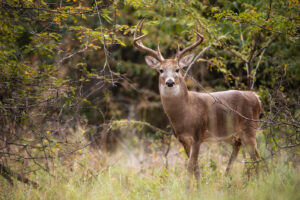 Texas has more privately owned, working land than any state – 142 million acres, according to Texas A&M Natural Resources Institute (NRI). That’s about 82% of the state dedicated to farms, ranches, and forests. These lands provide essential services for all Texans, from food and fiber, to clean water and air, and even outdoor recreation and a sense of pride.
Texas has more privately owned, working land than any state – 142 million acres, according to Texas A&M Natural Resources Institute (NRI). That’s about 82% of the state dedicated to farms, ranches, and forests. These lands provide essential services for all Texans, from food and fiber, to clean water and air, and even outdoor recreation and a sense of pride.
The growing Texas population leads to increased demand and rising land prices, which creates an incentive for landowners to sell part or all of their property. Land fragmentation is a principal concern in conservation because it typically causes habitat fragmentation. But ownership lines on a map don’t have to mean hard lines on the land.
Since all that land is privately owned, incentives are essential to encourage conservation. There are cost-share programs at the state and federal level for implementing conservation practices, but the most important incentive program in Texas is the open-space tax valuation (commonly called ag exemption or wildlife exemption). Ag, timber, and wildlife exemptions are essential for many landowners, particularly traditional rural landowners and producers, to retain ownership of their land by making it possible to simply afford the tax burden. Rising prices are great when you are selling, but when you are paying the taxes, we’d all like our property to be worth a little less.
The tax incentive is so great that special valuations like wildlife management actively encourage conservation practices like rotational grazing, brush management, deer population control, wildlife-friendly hay production, and prescribed burning. Even better is that these special tax valuations still generate more tax revenue than they cost in government services (see an explanation of that here).
Now imagine you own 1,000 acres that your family has held onto for the last 40 years because you had favorable taxes under your agricultural appraisal. Perhaps the cattle market is in the tank, or we’ve entered another decade-long drought like in the 1950s. Maybe you just don’t want to mess with livestock anymore. You do want to keep the land together for your family and your heritage. Wildlife management valuation is a tool that lets you accomplish these goals by keeping your taxes low while you practice conservation and active management to protect your piece of Texas.
What if that same property is just too valuable for you to resist selling, but you still care about the legacy of your land and how it is treated by future owners? Instead of selling off 50 to 20-acre estates to different folks that all treat their ranchette like a big yard, these new rural landowners can be incentivized to practice active wildlife management for the tax savings. This helps keep much of the habitat intact so even though the land is highly fragmented, the wildlife habitat and the essential services the land provides are still largely whole.
These are just a couple of ways that wildlife management works as an active tool for conservation. If you spend time on the NRI Texas Land Trends site, you’ll see how important it can be. While Texas has lost 2.2 million acres of working lands since 1997 (about ¼ acre for every new Texan in that time), over 5 million acres have been put under wildlife management in that same time. There’s no data to say how much of that would have been lost without the wildlife valuation law, but that’s 5 million acres of private land that is required to be actively managed for wildlife. That’s a lot of habitat protected with a pretty powerful tool.
This article was originally published in an April 2020 edition of Seasons.
If you have questions or would like more information about appropriate Wildlife Management activities for your property, please contact us at (512) 894-3479 or [email protected].
Plateau Staff Make an Impact at Texas Chapter of the Wildlife Society Annual Meeting
By Shane Kiefer, Director Of Ecological Services, Certified Wildlife Biologist, Senior Property Tax Consultant
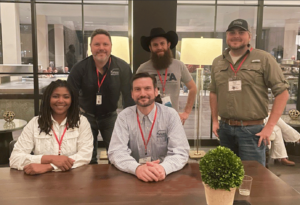 An important part of ensuring that we continue to provide the best possible advice and service to landowners is keeping our biologists connected to the professional wildlife community. Once a year in February, hundreds of wildlife biologists from all over Texas gather to spend three days talking about wildlife and conservation in our great state. This gathering is called the Texas Chapter of The Wildlife Society Annual Meeting.
An important part of ensuring that we continue to provide the best possible advice and service to landowners is keeping our biologists connected to the professional wildlife community. Once a year in February, hundreds of wildlife biologists from all over Texas gather to spend three days talking about wildlife and conservation in our great state. This gathering is called the Texas Chapter of The Wildlife Society Annual Meeting.
This is a big conference with 600+ Texas wildlife and natural resource professionals and students from over a dozen universities. There are professional workshops to teach important skills, technical presentations and research posters, a quiz bowl, awards for professionals and landowners, and a variety of social events. Plateau sent nine biologists to Houston to attend and serve in a variety of roles this year:
- Plateau co-presented a professional workshop with Texas Wildlife Association on wildlife management tax valuation
- Patrick Ryan, Staff Biologist, provided a technical session of some of his research on Texas horned lizards
- Danielle Belleny, Staff Biologist, served as a judge for the student Quiz Bowl and student poster presentations
- David Riley, Staff Biologist, helped plan and organize a record 9 workshops for professionals
- Tucker Slack, Staff Biologist, is leading the new class of the Teer Professional Development Program. Tucker and several other Plateau biologists are graduates of the Teer Program.
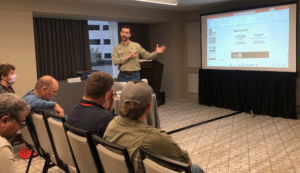 This was major time commitment for our staff, but well worth it to ensure that we support the Texas Chapter and stay connected to up-to-date information and to other professionals that can assist our landowners. The Wildlife Society (TWS) is an international professional society for wildlife biologists founded in 1937 with over 11,000 members. TWS provides the professional certification (Associate and Certified Wildlife Biologists) that many of Plateau’s staff carry. The Texas Chapter, founded in 1965, is the largest state chapter in the organization, and is an important voice for Texas wildlife and natural resources.
This was major time commitment for our staff, but well worth it to ensure that we support the Texas Chapter and stay connected to up-to-date information and to other professionals that can assist our landowners. The Wildlife Society (TWS) is an international professional society for wildlife biologists founded in 1937 with over 11,000 members. TWS provides the professional certification (Associate and Certified Wildlife Biologists) that many of Plateau’s staff carry. The Texas Chapter, founded in 1965, is the largest state chapter in the organization, and is an important voice for Texas wildlife and natural resources.
—–
About The Wildlife Society: Founded in 1937, is an international, non-profit scientific and educational organization serving and representing wildlife professionals in all areas of wildlife conservation and resource management. Their goal is to promote excellence in wildlife stewardship through science and education. For more about the Texas Chapter of the Wildlife Society, visit: https://tctws.org
Wildlife Management Activity Reminder: Spring Wildlife Surveys
By Kameron Bain, Landowner Account Manager
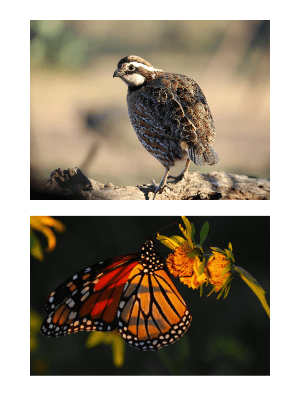 Spring is migration season for birds and monarch butterflies and breeding season for many species of wildlife, so it is a great time to get out and count.
Spring is migration season for birds and monarch butterflies and breeding season for many species of wildlife, so it is a great time to get out and count.
For informal surveys, simply watch your feeders and water sources and record who is visiting. You can do this by watching in the morning or evening and keeping a log of what you see. You should do this regularly (weekly or monthly) throughout the breeding season or all year long. You can also use remote game cameras that can watch 24/7.
Download the iNaturalist app to help you identify and catalog wildlife and plants seen on your property. See Plateau’s tutorial on iNaturalist.
- Time-Area counts are structured surveys that involve sitting at representative points throughout your property for a set period of time (typically 10 minutes) and recording all wildlife seen or heard within a set area. These are typically done seasonally, but spring is a great time to start.
- Spring call counts for quail are structured surveys where independent listening stations are set up throughout your property to count individual quail calling in the early morning.
- Spring Breeding Bird Surveys are point-count surveys focused on birds that are seen and/or heard at representative stations throughout your property.
All of these surveys are most informative when conducted annually or more often to establish trends in wildlife use of your property. It’s easy to get behind on activities – we’re here to help answer questions or do the work for you! Contact us at (512) 894-3479 or [email protected] to discuss appropriate wildlife surveys for your property, or get help conducting them.
Guest Feature: Cost Share Programs and Financing for Texas Landowners
Capital Farm Credit and USDA’s Natural Resources Conservation Service were invited to present a special feature, “Cost Share Programs and Financing for Texas Landowners,” during Plateau Land & Wildlife Management’s Winter 2023 Wildlife Exemption Webinar Series.
With more than 90% of land in Texas privately owned, the primary responsibility for environmental stewardship and protection of the state’s critical land and water resources falls upon private landowners.
Fortunately, several state and federally funded cost‐share assistance programs are available to off‐set associated expenses. This presentation outlines a partner-driven approach to conservation that funds solutions to natural resource challenges on agricultural land. Programs include support and guidance to help reduce soil erosion, enhance water supplies, improve water quality, increase wildlife habitat, and reduce damage caused by floods and other natural disasters.
For more information, visit https://www.nrcs.usda.gov and https://www.capitalfarmcredit.com/
Back to TopBack to Top
Attorney and Counselor, Eric Gomez, joins Plateau Webinar Series March 14, 2023
By PLW Staff

Tonight is the final webinar in Plateau Land & Wildlife Management’s 2023 Winter Webinar Series. Braun & Gresham Attorney and Counselor Eric Gomez will kick off the evening with a special presentation, “Preparing Your Land for Development,” from 5:45-6:00PM. Eric will offer considerations for private property owners to prepare their land for commercial, residential, or infastructure development.
About guest presenter, Eric Gomez: Eric is a real estate attorney based out of Austin / Dripping Springs who specializes in real estate transactions that safeguard his clients and their property against potential litigation. He sees his clients through the process of buying or selling real estate, addressing the unique elements of each deal to achieve the desired outcome and goals of the client.
About Braun & Gresham, PLLC: Braun & Gresham, PLLC provides expert legal counsel and practical advice for owners of rural property nationwide. Braun & Gresham uses traditional resources in innovative ways to help our clients protect and create new value in their land. Our clients form a broad cross-section—from new rural landowners and heritage ranching families to corporations and conservation developers. Together, we work to achieve their goals, applying our unique breadth of experience, knowledge and passion for the land.
Register for the webinar here: https://us02web.zoom.us/webinar/register/WN_lMLwjH37RkOWfMXIROmVUQ
Back to TopBack to Top
Field Notes: Pictures & Highlights of Properties in Wildlife Management
Ever wonder how Wildlife Management is benefiting landowners’ property and the wildlife that lives on it? Here are some photos and highlights, from Plateau’s field staff and game cameras, of successes and small victories our landowner customers are seeing on their property.
Plateau Land and Wildlife’s Platform Feeder: Turkey Tested, Turkey Approved!
Check out this video of wild turkeys enjoying a Plateau Land and Wildlife’s Platform Feeder.
Products & Services Division Assistant Manager Quincy Kennedy said the wild turkey on this Gillespie County property did not originally use the platform feature of the feeder, and only ate what fell to the ground. When the property owner asked what he could do to encourage the turkey to climb on top of the platform, “We recommended leaning a ladder against the side of the feeder,” Kennedy said, “and told him the turkeys would catch on eventually. They finally figured it out after 3 months!”
Some turkeys need a little extra help! Interested in testing this method out with your PLW Platform Feeder? To prevent non-target species from accessing the feed, remember to remove the ladder once the turkeys begin feeding from the platform.
So many of you are out there doing great work. We appreciate you, and so do the native wildlife on your property and across Texas. Large or small, you are making a difference. Look for more great examples of wildlife and landowner successes and victories in upcoming Seasons Newsletters!
News for Texas Landowners
The Hunt for Wildcat Fossils in Central Texas
Article by Asher Elbein for Texas Monthly
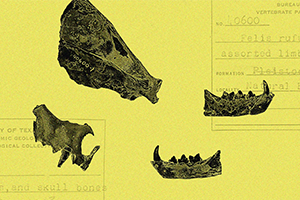
There were many ways to die underground during the Ice Age in Central Texas. Sinkholes in the karst hills, slick-sided and treacherous, swallowed unwary animals. Saber-toothed cats dragged their prey back to underground dens, leaving behind generations of bones, including those of the cats themselves, lying beside their victims in the dark. Treacherous paths in the depths, far from the sun, waited for those with the urge to explore. In 1960, that animal urge to slip underground led Orion Knox Jr. and three other St. Mary’s University students—all avid cavers—to go looking for caves. With the owners’ permission, they explored the Wuest family ranch in Comal County, 25 miles north of San Antonio. There the group discovered a passage at the bottom of a sinkhole, under the shadow of a great limestone bridge.
Overview of Biden WOTUS Rule
Article by Ag Law Blog
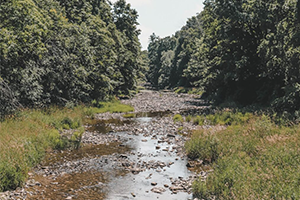
On December 20, 2022, the Environmental Protection Agency and the US Army Corps of Engineers released its Final Rule redefining “waters of the United States” (“WOTUS”) under the Clean Water Act (“Biden Rule”). [Read Biden Rule here.] The Biden Rule is set to go into effect on March 20, 2023. There have, however, been lawsuits challenging the Final Rule that could impact this effective date. For those of you keeping score, this marks the third attempt by the EPA to redefine WOTUS since 2015. The Obama administration promulgated a final rule in 2015, which was then repealed and replaced by the Trump administration’s final rule in 2020, which was repealed by the Biden administration in 2021. For more history than anyone likely wants, click here to read a law review article I co-authored with Jesse Richardson and Gatlin Squires.
Williamson commissioner: Why the county needs a groundwater conservation district
Article by Austin American Statesmen
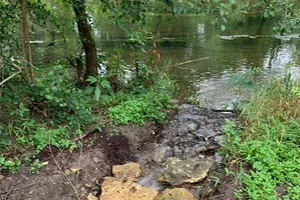 On March 9, the Aquifer Conservation Alliance of Williamson County announced it had withdrawn its petition for annexation by the Clearwater Underground Water Conservation District of Bell County.
On March 9, the Aquifer Conservation Alliance of Williamson County announced it had withdrawn its petition for annexation by the Clearwater Underground Water Conservation District of Bell County.
The combination of wells going dry from the pressures of development and industries, the absence of any type of drawdown monitoring or conservation practices for the Trinity Aquifer and the drought have all combined to negatively impact wells in Williamson County. Many residents are facing tremendous costs for drilling deeper and deeper wells. By 2021, 1,775 wells were registered in western Williamson County. Most of those wells serve homeowners, but also municipalities and ranchers. For rural local industries, aggregate mines and batch concrete plants are the primary users of wells. It’s the “Rule of Capture” in Texas, and “he who gets to the water,” that allow unlimited well water draw outside of the protective monitoring by a groundwater conservation district.
Empire, Wide and Glorious: Texas State Parks Celebrate 100 years with six new parks coming
Article by By Rose Cahalan for Texas Monthly
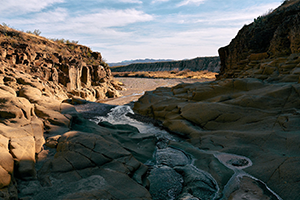
Forty-six enamel pins adorn a canvas banner hanging on my bedroom wall. Collected over a decade of camping and hiking trips, each one evokes a small but powerful memory. When I look at the red leaf that represents Lost Maples State Natural Area, I can smell cinnamon buns baking in a Dutch oven nestled in campfire coals on a chilly Hill Country morning. A grinning skeleton in an inner tube takes me back to a lazy summer day floating the Frio River at Garner State Park, not far from Lost Maples. There’s a pin depicting Enchanted Rock State Natural Area, in Fredericksburg, where my flashlight beam caught a glimpse of a ringtail cat. The image of a shorebird reminds me of shrimping in the bay at Galveston Island State Park and netting only a couple piddly catches, which we fried up in butter, nonetheless. I can still taste them.
1,000+ acres of biodiverse Texas Hill Country permanently protected from development
Article by FOX4KDFW
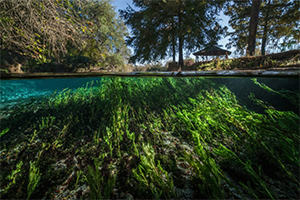
More than 1,000 acres of uniquely biodiverse land in the Texas Hill Country has been permanently protected from future development.
Purgatory Creek Nature Preserve is a 1,068-acre conservation easement that includes Golden-cheeked Warbler habitat, natural springs, canyons, caves, and other karst features that carry water directly into the Edwards Aquifer, according to a press release from Hays County. The Hays County Commissioners Court approved approximately $9.6 million for the Purgatory Creek Nature Preserve conservation easement in September 2022 thanks to the Hays County Parks and Open Space Bond.
The 2020 Parks and Open Space Bond called for the issuance of $75 million to establish parks, open spaces, conservation lands, and other recreational opportunities in Hays County.
Couple captures ‘rare’ sighting of ocelots running across South Texas road
Article by Priscilla Aguirre for MySA.com
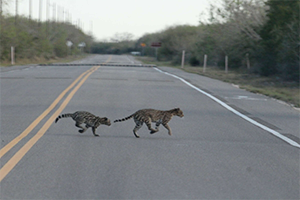
A couple captured a “rare” moment after taking pictures of ocelots running across a South Texas road near Laguna Atascosa National Wildlife Refuge. It was two ocelots, a mother and kitten, that were seen by Jake Strouf and his fiancé, the refuge told MySA. The wildlife refuge, which is located in Los Fresnos near Brownsville, said the ocelots were seen crossing a main road in the refuge. Officials said it was a “rare opportunity” as most visitors don’t see the animals during the day. Ocelots typically stay hidden and are most active at night. The refuge also called it an “extraordinary sighting.”
Ocelots historically range throughout the Southwestern U.S., but now are limited to a small breeding population….
Texas’s Biggest Coastal Wildlife Rescue Center Is Now Open in Corpus Christi
Article by Juli Berwald for Texas Monthly
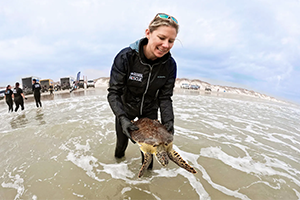
Jesse Gilbert, CEO of the Texas State Aquarium, in Corpus Christi, hands me a hard hat as we walk toward a massive building in its final stages of construction. To our right, palm trees sway in the wind and sunlight glints off the expansive glass ceiling of the Texas State Aquarium, where visitors encounter more than 250 species of fish, reptiles, mammals, birds, and invertebrates from the Gulf and the Caribbean. “We’re the biggest aquarium in Texas,” Gilbert says. “And now what’s really incredible is you’ve got the leading coastal-wildlife rescue program in the country.” Open to the public today, the aquarium’s new Port of Corpus Christi Center for Wildlife Rescue is a 26,000-square-foot, state-of-the-art hospital for marine mammals and sea turtles. While the aquarium requires an admission fee, the rescue center is free of charge. (A new aviary is also part of the expansion, but to protect the birds’ recovery, this area is closed to visitors.)
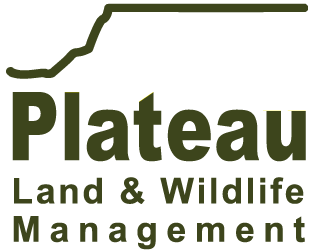





Sorry, the comment form is closed at this time.